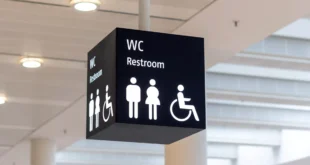Most people who work with technology are well aware of how fast it can move. We’re all familiar with the latest smartphones becoming obsolete before we know it. But it’s easy to forget that the same thing can happen to our business websites. Technology is technology, no matter whether it’s on our phone or a remote server. And one needs to keep up with the latest advances to have top rankings in competitive markets. That often means emphasizing different aspects of technology. And for 2024, that means finding ways to maximize one’s investments in IP address geolocation and network intelligence. We’ll examine the five best ways to use these and other techniques to optimize website localization in 2024.
Statistics have shown that there are 3 million internet users and most of the people come from regions like Asia, Europe America. But this does not mean that all will be buying your product but these people can be the potential one in the international market.
You will have to target them by identifying the demography of your potential buyer and then modifying the website giving it a local flavor.
According to the Common Sense Advisory

72.1%: Consumers like to spend most or all of their time on the websites which provide information in their local language.
72.4%: Consumers said they would be more likely to buy a product with information in their own
language
As mentioned above similar example has been reported by the Globalization and Localization Association (GALA),
that in China,
95% of Chinese people who are using the internet prefer their Chinese language, websites likes shopping ones use the Chinese language to capture its potential audience.
1. Understand that a geolocation API is your toolkit
Many of the following suggestions will seem intimidating at first glance. But the key is to use a powerful geolocation API. For those who haven’t used API sets very often, they’re necessarily plugin components for code. Talented coders, ideally experts in their field, encapsulate a considerable amount of their work into a single portable codebase. The exact method by which one taps into it will change depending on the programming language. But in general, one needs to tell a program where to look for that additional functionality.
2. The brand matters

Business owners tend to forget about how famous a brand is. It is in large part due to working so hard to be the one who sets trends. A trendsetter often has a hard time allowing himself to follow trends. But it’s important to recognize that the work one puts into getting ahead is shared by those in tangentially related industries.
The people supplying your API should also be putting a lot of work into it. That’s why it’s important to find brands, such as DB-IP, which you can trust. The best of the best have a combination of a great product and great support. They’re what delivers the product from tip one and relates it to everything else.
3. Geolocation should begin before the landing page shows up
Geolocation can be a fantastic tool. But one needs to make a conscious decision to lead with it when delivering content. It should begin before someone sees your website. There are two essential pieces of data that every visitor brings with them. That is the referring point of origin and their geolocation. The former is usually reasonably easy to get. But the latter is where the geolocation API comes into play. When properly used, it will tell you where your visitors came from. Both of these can then let you dynamically modify landing page content to take that information into account.
4. Ask what you can do for your users based on geolocation

One of the most important rules for the business world is to ask how both parties can benefit from the transaction. The benefit for you as a business owner is obvious. But you can’t sell people on the idea of simply giving you money. You have to demonstrate how doing business will profit them as well. Basically, how can you serve their interests better than the competition?
Geolocation and dynamic content helps you tailor discussions to the visitor. Likewise, this helps you know how you can best meet their needs. It’s not just something that’ll help you. It helps potential customers as well. And it gives a considerable advantage over competitors trying to market to the world as a whole. The more you can tailor your message to the individual, the better able to serve them you’ll be.
5. Recreate the experience of a local store
There’s a lot of reasons why some people still prefer standard brick and mortar stores. One of the most important is that it can offer a “what you see is what you get” experience. Using geolocation, you can recreate this experience for your customers or clients. Geolocation can make it easy to tailor available services to a particular area. It recreates the storefront experience.
Where to take it from here
In the end, it comes down to creativity. These tips can serve as an excellent base upon which to build a more robust business plan. But one of the great things about geolocation is that it’s a toolbox. It allows you unlimited creativity to take an idea and turn it into reliable results. But you can’t find that future without deciding to make it happen. That involves using an API, coming up with ideas, and generally working to make the dream a reality.
 Imagup General Magazine 2024
Imagup General Magazine 2024



